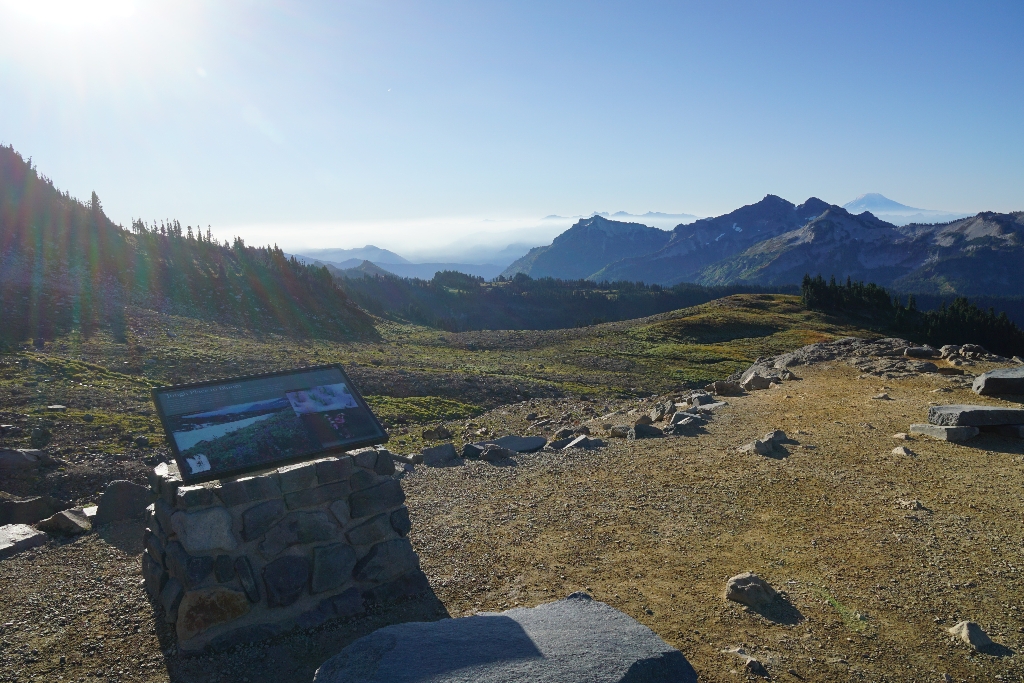
Title: Tough Place to Bloom
Main Text
Buried by snow for nine months or more, blasted by freezing winds, clutching at thin volcanic soil - it seems amazing that anything could grow under these conditions. Yet subalpine meadow plants thrive at this elevation, completing their growth cycle in a compressed time period. Look closely at their adaptions. Fuzzy hairs of the birds beak lousewort retain heat and trap moisture. With only a few weeks of summer, the growing season is accelerated: glacier lilies begin to bloom out of receding snowbanks.
Secondary Text
Subalpine plants are not adapted to foot traffic. Help preserve the meadows by staying on maintained trails.
Exhibit Panel Description
The main text stretches across the top third of the panel against a green background. The secondary text is tucked into the upper right corner. Below the text, the left side of the panel is filled by one photo while two smaller photos are stacked on the right side of the panel, slightly overlapping the main photo. The main photo shows a meadow filled with red, blue, white, and yellow flowers blooming next to a snow patch on a mountain slope. A caption above the photo reads "Paradise meadows in mid-summer". The top photo on the right side of the panel shows several yellow flowers with green leaves growing directly out of snow. A caption above the photo reads "Glacier lilies". The photo below it shows a close-up of several flowers with reddish-purple petals on a fuzzy stem. The top petal on each flower folds together into a sharp point like the beak of a bird. A caption above the photo reads "Birds beak lousewort".
Visit This Exhibit Panel
This exhibit panel is located near the junction of the Skyline Trail and the upper Glacier Vista Trail at Paradise. The Skyline Trail begins from the Paradise upper parking lot and is part of a network of trails in the Paradise Meadows. The Paradise Road is open year-round, but closes nightly during the winter.
Is there something we missed for this itinerary?
Itineraries across USA


















































